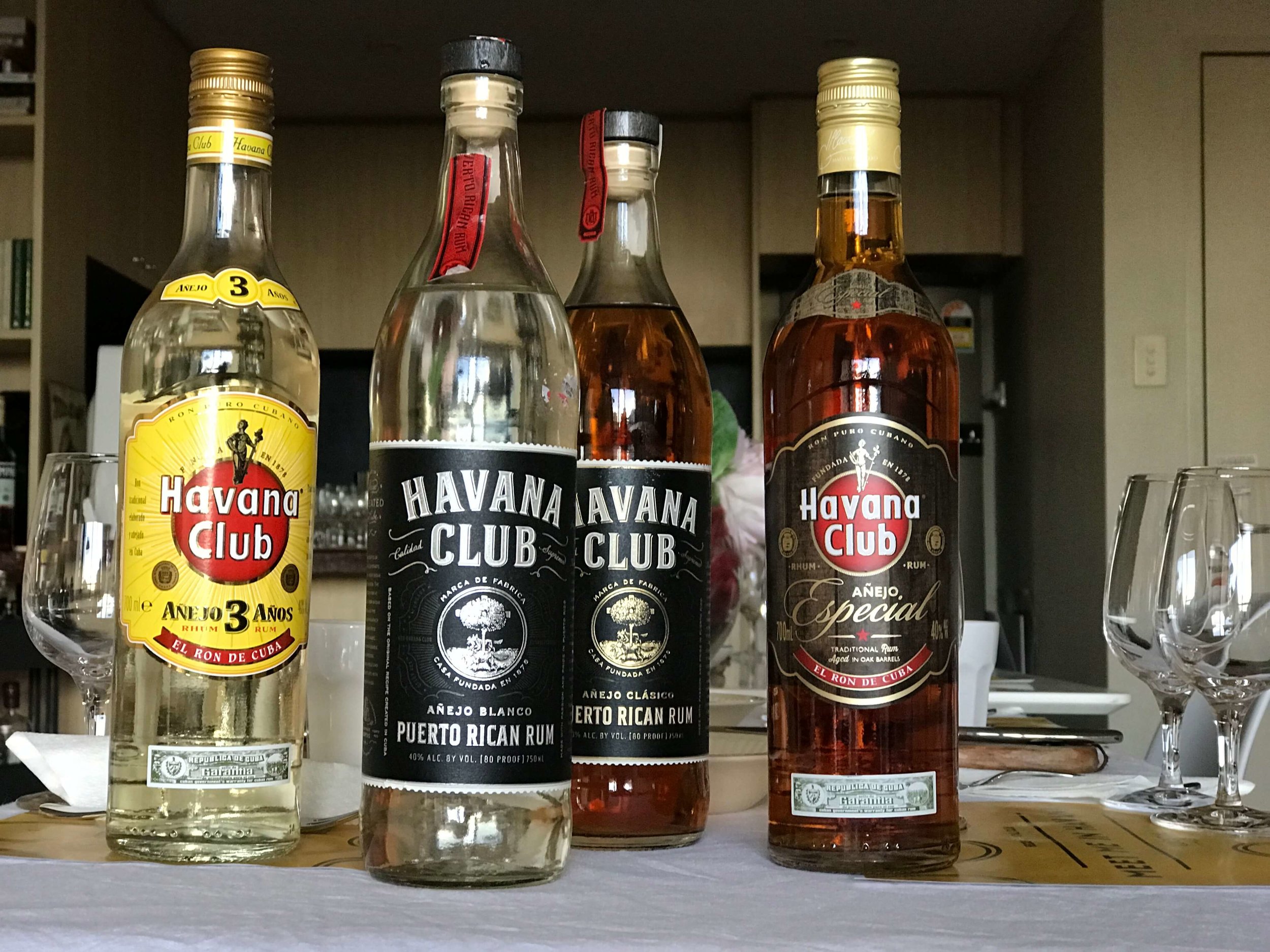A tale of two Havana Clubs - the tasting
A rum tasting with a difference, this one explored the two Havana Club rums available for sale in two very different markets
Although they share the same name, there’s sufficient differences between the Bacardi made Havana Club and that produced by its counterpart in Cuba. For a brief run down on the history behind how this came to be, read our piece here.
Background to the Bacardi owned Havana Club
In 2016, Bacardi rolled out two different expressions of its Havana Club in the USA;
The Blanco (or silver) is described as being “aged for a year in oak. The aged rums are then blended and filtered before returning to oak to be aged for a further 2 months.”
The Classico is described as being “aged for between 1 and 3 years in oak. The aged rums are then blended and filtered before returning to oak to be aged for a further 3 months.” Although it doesn’t say, accounts suggest this is to be sipped.
We couldn’t find much information on the actual production methods for the Bacardi version of Havana Club – in fact, we couldn’t even access the official website for it from Australia. But going off what we know of Bacardi’s production methods for their namesake rum brand, it is safe to surmise that the same is used in the making of their Havana Club, which is to age two different distillates separately in oak barrels before blending them. Generally, their distillates are of different alcoholic strength and have different flavour profiles.
Background to the Cuban made Havana Club
Pernod Ricard in the meantime offers a number of expressions of its Havana Club in Australia. The core range primarily consists of:
The 3 Anos (or 3 years)
The Especial
The 7 Anos (or 7 years)
The 3 or 7-year reference on the label is a reference to the youngest rum in the bottle. Although it doesn’t say it on the label, the Especial contains blends of rums aged up to 5 years. Similar to Bacardi, the Cuban Havana Club also utilises a parallel method of blending 2 distillates that are of different alcoholic strength and flavour profile – the lower proof alcohol is referred to as “aguardiente” and is aged for at least 2 years before it is blended with the higher proof alcohol and returned to barrels for aging.
Following the revolution of 1959 that nationalised rum making, the country has laid down some rules regarding the production of Cuban rum. In a nutshell:
The rum has to be made using molasses from Cuban grown cane.
The rum has to go through a double aging process.
The “aguardiente” has to be aged for at least 2 years in pre-used barrels.
After the initial 2 year aging period, the aguardiente is blended with the higher proof distillate before further aging is done.
The maximum alcohol proof when bottling is 41% ABV. (though it seems there’s some exceptions for “premium” offerings)
There’s obviously more to the rules in terms of technical details; if you wanted to read more, Cocktail Wonk does a good detailed write up of them here. Interestingly, all of the rum that comes out of the country is down to only 8 rum masters who between them, are responsible for driving the production and blending all of the different expressions from each Cuban brand, and not just Havana Club.
How do the two Havana Clubs compare in taste?
Given the different variations in production and aging across the two brands, it wasn’t possible to do a like for like tasting as such. But it was possible to identify a standard profile once we had tried the Puerto Rican Blanco and the Cuban 3 Anos, so much so when the audience tried the Anejo Classico and the 7 Anos, most were able to pick out which was the Cuban vs the Puerto Rican. This was especially so after we threw in the Bacardi Superior White Rum, which is said to use distillates aged between 1 and 2 years. The Puerto Rican rum certainly came across as lighter on the nose and on the palate, compared with the Cuban rum that provided more of the grassy sugar cane on the nose, and was punchier and sweeter on the palate. In fact, one of the audience members even commented that the Puerto Rican rum felt like the “vodka” of the rum world to her – whilst still smooth, it was more neutral in flavour. The difference in the flavour profile came through also when we put each rum in a daiquiri.
All in all, an eye opening session, that not just demonstrated differences in flavour profiles across brands, but used one brand to tie it all together. The consensus overall though? Most preferred the Cuban version to sip as it was more flavourful. In the daiquiri, it was a mixed reaction - the lighter Puerto Rican blended seamlessly with the other ingredients in the cocktail so it was a smooth drinking experience overall for half the group whereas for the other half, the Cuban version "stood out" from the other ingredients, so it was almost like you could taste the rum first, then the other ingredients.
Until we meet again in Havana!

